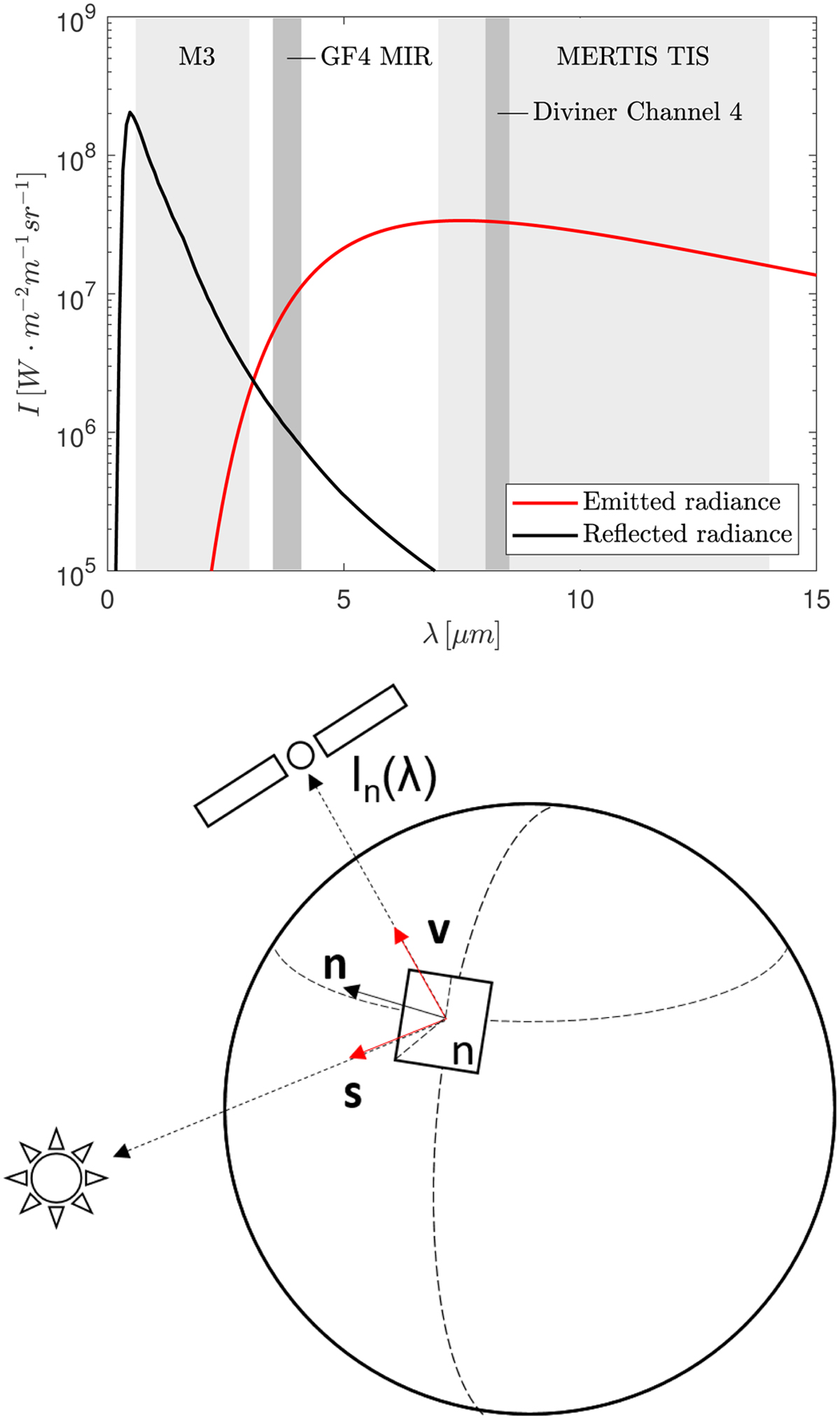Fig. 1

Download original image
Spectral and geometric relationships for thermal modeling. Top: reflected solar radiance (black curve) and thermally emitted radiance (red curve) emerging from the subsolar point at lunar noon, given a constant reflectance of r = 0.1, an emissivity of e = 0.95 and Adh = 0.07. The spectral domain of the M3 instrument (0.6–3.0 μm) is dominated by solar reflection, but the thermal component increases to the same order of magnitude at 3 μm. The spectral domain of GF-4’s MIR channel (3.5–4.1 μm) is dominated by thermal emission, but roughly 10% of reflected radiance remains. The spectral range of MERTIS (7–14 μm) and Diviner’s channel four (8.10–8.40 μm) are entirely dominated by thermal emission. Bottom: illumination and observation geometry. The shape model is divided into N surface elements. We are interested in the radiance In(λ) that emerges from the nth facet. The vectors s, v, and n indicate the illumination vector, the viewing vector, and the surface normal vector.
Current usage metrics show cumulative count of Article Views (full-text article views including HTML views, PDF and ePub downloads, according to the available data) and Abstracts Views on Vision4Press platform.
Data correspond to usage on the plateform after 2015. The current usage metrics is available 48-96 hours after online publication and is updated daily on week days.
Initial download of the metrics may take a while.


